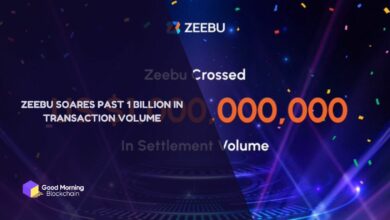
The highly anticipated Ethereum “Dencun” upgrade finally touched down on the Goerli testnet on Wednesday 17th, albeit not without a slight hiccup.
While the network initially stalled for four hours due to a bug, swift action from developers ensured a smooth launch after a quick patch.
Dubbed “Cancun-Deneb” or “Dencun” for short, the upgrade marks a significant step forward for Ethereum, introducing several key improvements, including:
- Reduced block times: Dencun introduces a new transaction verification method, aiming to cut block times from 13 seconds to 6 seconds. This could significantly enhance network throughput and transaction speed.
- Enhanced client diversity: The upgrade encourages broader adoption of diverse Ethereum clients, reducing potential vulnerabilities and fostering decentralization.
- MEV circuit breaker: A new mechanism automatically detects and pauses potentially manipulative “Miner Extractable Value” (MEV) transactions, protecting users from unfair practices.
The upgrade was scheduled to go live on the Goerli testnet, a public network that mimics the main Ethereum network, on January 17 at 6:32 UTC.
However, a bug in one of the Ethereum clients, Prysm, caused the network to split and fail to reach consensus, resulting in a lack of finalization.
“I want to mention that we went from fork -> issue -> triage -> fix -> finality in under 4h,” tweeted Ethereum developer Parithosh Jayanthi. “The debugging apparatus has gotten great!”
The bug was quickly identified and fixed by the developers, and the network resumed finalization after about four hours.
The developers said that the delay was likely due to low participation and outdated validators on the testnet and that the issue would not affect the mainnet deployment.
The Dencun upgrade is part of a three-phase testing process, which will also involve the Sepolia and Holesky testnets, before it is activated on the main Ethereum network.
Further research by the team at gmBlockchain confirms that Dencun is scheduled to hit the Sepolia testnet on January 30th, followed by the Holesky testnet on February 7th.
The developers have not announced a date for the mainnet launch yet but said that they are confident that the upgrade will bring significant benefits to the Ethereum ecosystem and users.






